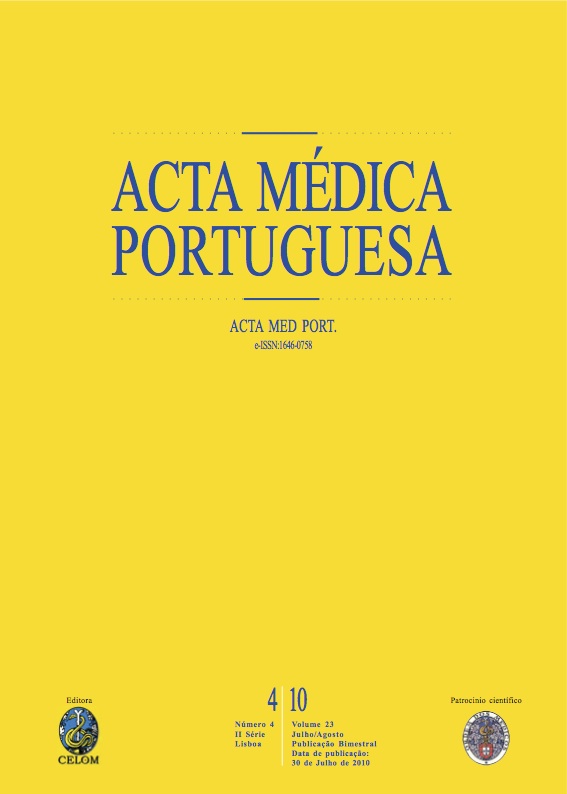Healthcare associated infection: emerging problem in a neurology department.
DOI:
https://doi.org/10.20344/amp.695Abstract
Healthcare-associated infection (HAI) is, nowadays, a serious problem, contributing a lot to the burden of the hospital stays. Its impact is really huge and the study of these matters is taking a growing interest.To compare, in terms of HAI, the current Neurology Department (localized inside the building of Hospital Geral) and the oldest one, which was far away from the institutional campus. To identify difficulties regarding the management of HAI, trying to propose measures for quality improvement.We revised the clinical files of the patients with HAI documented by culture, on a homologue period of 6 months. Variables like more frequently isolated microorganisms, antibiotics sensibilities, patients' comorbidities, treatment adequacy and duration of hospitalization were analyzed.In the oldest Department, 23 patients were identified, 8 men (mean +/- 2SD: 80.4 +/- 9.04 years old) and 15 women (77.3 +/- 21.28 years old), with positive microbiological studies (51). Ischemic stroke caused 73.9% of these hospitalizations. Escherichia coli - EC - (27%), methicillin-resistant Staphylococcus aureus - MRSA - (22%) and Klebsiella pneumoniae - KP - (10%) were the most frequently identified microorganisms in the biological samples studied (sputum, urine, blood, urethral exudate and eschar). Amoxicillin/clavulanic acid was the most empirically used antibiotic (only effective on 37% of the cases, according to the sensibility tests). Hospitalizations had an average of 22 days and 1.3 antibiotics per patient were used. At discharge, Rankin had a mode of 5. In the current Department, 46 patients were studied, 22 men (76.4 +/- 22.6 years old) and 24 women (74.1 +/- 32.6 years old), having 119 positive cultures. Again, ischemic stroke caused the majority of the admissions (52.2%). MRSA (26%), Pseudomonas aeruginosa - PA - (17%) and EC (17%) were the most prevalent pathogens (the same biological products were studied, plus lingual exudates and central venous catheter tips). Ciprofloxacin was the most used antibiotic (suitable on 75% of the cases). Internments had an average of 24.3 days and, this time, 2.5 antibiotics were used per patient, by mean. At discharge, Rankin evaluation had again a mode of 5.Despite the taken measures and change in facilities, HAI had really increased in the Neurology Department. Since human resources are the same, we think are important, as possible aggravating conditions, space restriction and ward sharing with patients of other medical specialities, as it happens in the current Department.More aggressive pathogens require a rapid and comprehensive intervention, in order to minimize its impact on daily clinical practice and in the management of hospital stays.Downloads
Downloads
How to Cite
Issue
Section
License
All the articles published in the AMP are open access and comply with the requirements of funding agencies or academic institutions. The AMP is governed by the terms of the Creative Commons ‘Attribution – Non-Commercial Use - (CC-BY-NC)’ license, regarding the use by third parties.
It is the author’s responsibility to obtain approval for the reproduction of figures, tables, etc. from other publications.
Upon acceptance of an article for publication, the authors will be asked to complete the ICMJE “Copyright Liability and Copyright Sharing Statement “(http://www.actamedicaportuguesa.com/info/AMP-NormasPublicacao.pdf) and the “Declaration of Potential Conflicts of Interest” (http:// www.icmje.org/conflicts-of-interest). An e-mail will be sent to the corresponding author to acknowledge receipt of the manuscript.
After publication, the authors are authorised to make their articles available in repositories of their institutions of origin, as long as they always mention where they were published and according to the Creative Commons license.









